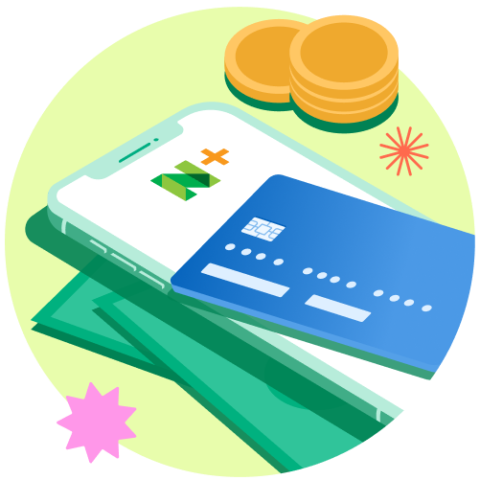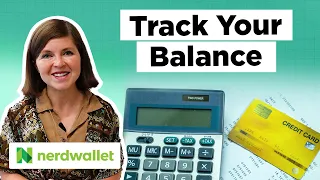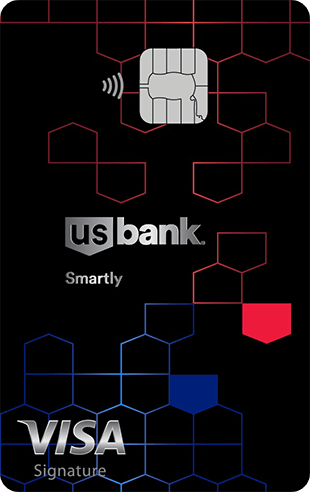
Use your credit card balance and interest rate to see how much your interest charges would be for a month.
Updated Jun 19, 2024 9:54 a.m. PDT · 4 min read Written by Paul Soucy Lead Assigning Editor Paul Soucy
Lead Assigning Editor | Credit cards, credit scoring, personal finance
Paul Soucy has led the Credit Cards content team at NerdWallet since 2015 and the Travel Rewards team since 2023. He was an editor with USA Today, The Des Moines Register and the Meredith/Better Homes and Gardens family of magazines for more than 20 years. He also built a successful freelance writing and editing practice with a focus on business and personal finance. He was editor of the USA Today Weekly International Edition for six years and received the highest award from ACES: The Society for Editing. He has a bachelor's degree in journalism and a Master of Business Administration. He lives in Des Moines, Iowa, with his wife, Sarah; his two sons; and a dog named Sam.
Assigning Editor Kenley Young
Assigning Editor | Credit cards, credit scores
Kenley Young directs daily credit cards coverage for NerdWallet. Previously, he was a homepage editor and digital content producer for Fox Sports, and before that a front page editor for Yahoo. He has decades of experience in digital and print media, including stints as a copy desk chief, a wire editor and a metro editor for the McClatchy newspaper chain.
Fact Checked
Many, or all, of the products featured on this page are from our advertising partners who compensate us when you take certain actions on our website or click to take an action on their website. However, this does not influence our evaluations. Our opinions are our own. Here is a list of our partners and here's how we make money.
Credit card interest is a monthly fact of life for tens of millions of credit card holders, but to many, it's a mystery exactly how credit card interest is calculated — how the interest rate on their card account translates into the finance charge that appears on their monthly statement. NerdWallet's credit card interest calculator can do the math for you.
Start plugging in numbers, or read below for guidance on how to get the most accurate result.
How much interest you get charged on a credit card is determined by a handful of factors:
Ready to earn your first $100 in rewards?Nerdwallet+ members can earn $100 in rewards by paying their first bill on time with one of these eligible credit cards.
GET STARTED
Let's start with the grace period: If you pay your credit card bill in full by the due date every month, you'll never have to pay interest on purchases. Period. You don't really need a credit card interest calculator because there's nothing to calculate. Your interest rate can be essentially irrelevant .
If you roll debt over from one statement to the next, though, interest will apply.

When your credit card statement comes in the mail (or is posted online), it shows your total balance as it stood on the last day of the billing period. But that balance is not the number used in calculating your interest charge. The number that matters is your average daily balance during the billing period. The card issuer takes the balance on your account for each day in the period, adds them all together, and then divides by the number of days in the period.
For example, say you had a 30-day statement cycle and started with a balance of $100:
If you made no charges or payments for the full cycle, your average daily balance would be $100.If you had a $45 charge post on the 11th day of the cycle and no other activity, your average daily balance would be $130. (Ten days at $100, then 20 days at $145.)
If you had a $45 charge on the 11th day of the cycle and a $60 payment on the 21st day, your average daily balance would be $110. (That's 10 days at $100, then 10 days at $145, then 10 days at $85.)
Of course, tracking your daily balance is easy if you make only one purchase and one payment per month. But if you use your credit card regularly throughout the month, it's a lot harder — and figuring your average daily balance for the entire cycle is a nightmare. We've created a tool that allows you to enter your purchases and payments over the course of a month to determine your average daily balance:
CLICK TO OPEN OUR AVERAGE DAILY BALANCE TOOLNerdWallet's credit card interest calculator asks you to enter your account balance. Using your average daily balance will produce the most accurate result. For a ballpark figure, you could use the closing balance shown on your statement, or estimate where your account balance stands on a typical day.
The interest rate that applies to purchases on your account will be printed on your monthly statement. Interest rates are given as an annual percentage rate, or APR. Although the stated rate is an annual rate, credit cards typically charge interest on a daily basis. The daily rate is usually 1/365th of the annual rate. So if your APR is, say, 18.99%, the daily rate would be about 0.052%, which is 1/365th of 18.99%.
Interest on credit cards typically compounds daily. This means that the interest charged for day 1 of the period is added into the calculation for day 2, the interest from day 2 is added into the calculation for day 3, and so on.
Your minimum payment each month usually includes all the interest that has accrued, any fees you have incurred and a small percentage of the principal balance.
Many credit cards charge different APRs on different balances. The purchase APR applies to things you buy with the card, while separate APRs apply to balance transfers and cash advances. When this is the case, the card issuer calculates separate average daily balances for purchases, transfers and advances, applying the specified APRs to each.
Each credit card billing cycle covers about one month's worth of time, but billing periods don't line up exactly with calendar months. They typically start in one month and end in the next. Your billing cycle closes on or around the same day of each month. The number of days in the billing period varies, usually between 28 and 31 days. There are a few reasons for this:
Different months have different numbers of days. Some issuers might not allow statements to close on weekends or holidays.Federal regulations require that your due date land on the same day of each month and that you have at least 21 days between the time your statement closes and your due date.
Our credit card interest calculator lets you choose a number of days from 28 to 31. If you aren't sure, 30 days is a good default; or you can use the number of days in the calendar month in which the cycle began. (For example, if the cycle began in April and ended in May, go with 30 because April has 30 days.)
How the math works: 30-day cycle, starting balance of $100
No purchases or payments (30 days at $100)
30 x $100 = $3,000 Divided by 30 days in cycle: $3,000 / 30 = $100
$45 purchase on day 11 (10 days at $100, then 20 days at $145)
(10 x $100) + (20 x $145) = $1,000 + $2,900 = $3,900 Divided by 30 days in cycle: $3,900 / 30 = $130
$45 purchase on day 11 and $60 payment on day 21 (10 days at $100, then 10 days at $145, then 10 days at $85)
(10 x $100) + (10 x $145) + (10 x $85) = $1,000 + $1,450 + $850 = $3,300 Divided by 30 days in cycle: $3,300 / 30 = $110
About the authorYou’re following Paul Soucy
Visit your My NerdWallet Settings page to see all the writers you're following.
Paul has been the lead editor for NerdWallet's credit cards team since 2015 and for the travel rewards team since 2023. Previously, he worked at USA Today and the Des Moines Register, then built a freelance writing and editing business focused on personal finance topics. He has a bachelor's degree in journalism and an MBA. See full bio.
Coming soon: Earn up to 4% cash back on every purchase

U.S. Bank Smartly™ Visa Signature® Card
Unlimited 2% cash back on every purchase. Up to an additional 2% cash back when paired with a U.S. Bank Smartly® Savings account.Cash back rates can be obtained when rewards are redeemed into an eligible U.S. Bank deposit account.
The U.S. Bank Smartly™ Visa Signature® Card will be available soon - be among the first to apply. Read our review and join the waitlist below.
Read ReviewWhether you want to pay less interest or earn more rewards, the right card's out there. Just answer a few questions and we'll narrow the search for you.
Get Started MORE LIKE THIS Credit Cards Archive Low-Interest and No-Annual-Fee Credit Cards Credit Card Basics
Download the app

Disclaimer: NerdWallet strives to keep its information accurate and up to date. This information may be different than what you see when you visit a financial institution, service provider or specific product’s site. All financial products, shopping products and services are presented without warranty. When evaluating offers, please review the financial institution’s Terms and Conditions. Pre-qualified offers are not binding. If you find discrepancies with your credit score or information from your credit report, please contact TransUnion® directly.
NerdUp by NerdWallet credit card: NerdWallet is not a bank. Bank services provided by Evolve Bank & Trust, member FDIC. The NerdUp by NerdWallet Credit Card is issued by Evolve Bank & Trust pursuant to a license from MasterCard International Inc.
Impact on your credit may vary, as credit scores are independently determined by credit bureaus based on a number of factors including the financial decisions you make with other financial services organizations.
NerdWallet Compare, Inc. NMLS ID# 1617539
California: California Finance Lender loans arranged pursuant to Department of Financial Protection and Innovation Finance Lenders License #60DBO-74812
Insurance Services offered through NerdWallet Insurance Services, Inc. (CA resident license no.OK92033) Insurance Licenses
NerdWallet™ | 55 Hawthorne St. - 10th Floor, San Francisco, CA 94105